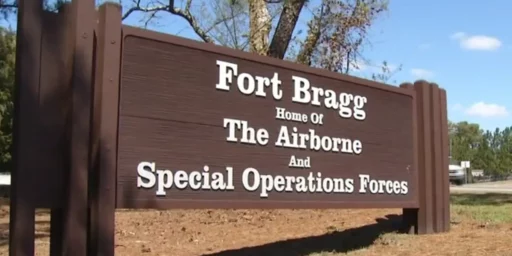World Class Training
An interesting piece in today’s Fayetteville (NC) Observer provides an inside look at some of the advanced training techniques that have recently been put in place at Fort Bragg. Even other elite militaries, like Israel’s, come to the U.S. because the realism of the training given our armed forces is simply unmatched anywhere.
The entire piece is in the extended entry.
Fort Bragg Training Has World Appeal
National Guard soldiers burst into a room, firing live ammunition in an attempt to pop pink balloons taped to pictures of gunmen.When the shooting is over, a balloon is left intact.
In exasperation, a soldier squeezes off a round at point-blank range, and the balloon is obliterated.
The “room clearing” exercise occurred during three days of training at Fort Bragg’s Range 75, where soldiers also learn how to breach doors, quickly tell friend from enemy, change ammunition magazines in a hurry and shoot accurately under stress. Observers look down at the trainees in the open room from a catwalk above and critique their performance.
“If the balloons are still up once they have cleared the room, then we know they’ve got issues,” said Capt. Patrick Clune, the officer in charge of the range.
Fort Bragg averages about 3 million man days of training every year. Airplanes drop hundreds of soldiers on drop zones, and soldiers practice throwing grenades, thrusting bayonets and shooting artillery.
On a given day, on one range, newly mobilized National Guard soldiers might be learning about equipment they have not received through the supply system. On another range, Special Forces snipers might be knocking down targets more than a half mile away.
Training has come a long way since the days when silhouettes were nailed to a tree for target practice. These days, three-dimensional mannequins will stand up, move and fall when shot.
“They look as realistic as you can get,” said Mike Lynch, head of the Training Division of Fort Bragg’s Readiness Business Center. “The technology is out there and it is becoming very, very cheap to have mannequins that will not only stand up and turn or raise an arm to shoot at you. They also have embedded tape recorders. They will talk to you in seven different languages and tell you to watch out for the guy around the corner.”
Aircraft simulators can incorporate scenarios from Iraq to Germany to Korea, all kinds of weather and emergencies, and altitudes from sea level to 17,000 feet.
The 82nd Airborne Division is traditionally the largest customer of Fort Bragg’s ranges. The division specializes in fighting at night and seizing airfields for follow-on forces.
In a typical year before most of the division was deployed to Iraq and Afghanistan, a paratrooper trained about 270 days, conducted 12 parachute operations, and participated in day and night live-fire exercises.
They are now trying to get the same training more quickly.
Maj. Gen. Chuck Swannack, the division commander, said his troops are “tired and run hard” from deployments. Improved technology helps get them on and off ranges quicker, so they can rest and spend more time with their families.
“We can make the range dark inside a building and do that kind of training to make sure they can do night (target) acquisition and firing rather than having to have them out on a weekend somewhere,” Swannack said.
Worldwide training
People come to Fort Bragg from around the world to train. Marines fire artillery. Rangers practice urban combat and airfield seizures. Federal agents learn combat skills.
Foreign pilots and presidential flight detachments train at Fort Bragg, too.
“When the Israelis come in here, they want to train in the Apaches,” said Ron Spencer, flight standardization and flight simulation chief.
“They are looking for techniques, and our guys take them through. They don’t have the facilities over there to be able to train for the procedures they need to do, so they come here.”
Colombian military pilots come to Fort Bragg’s simulators to learn to fly in their own mountains on drug-interdiction missions.
“We teach them how to survive in the environments they are in,” Spencer said. “They don’t have the facilities there to do that.”
The fixers
When Larry Michaels hears an electrical storm on a summer night, he knows he’s going to have a rough day at work the next day.
Michaels is an electrician at Fort Bragg’s Range Control, and storms can play havoc with the electric relays and diodes that operate the targets.
“It’s a headache, a real big headache,” Michaels said. “Those targets would have to be pulled, put on a truck, taken someplace else, repaired and brought back.”
He is among the electricians, carpenters and heavy-equipment operators behind the scenes who keep the ranges running. They are organized in teams that rewire ranges, paint lane markers, keep targets working and maintain parking areas.
The ranges themselves are centrally controlled.
In a recent exercise, Black Hawk helicopters with a howitzer attached underneath flew 200 feet above Longstreet Road. The pilots were talking to the Air Traffic Control Ground Firing Section, the nerve center of Range Control at Longstreet and Gruber roads on Fort Bragg.
“Everything that goes on at Fort Bragg in the training areas comes through this room,” said John Botello, supervisor at Range Control.
The darkly lit control room has mapboards and glowing radar monitors. Ground controllers watch activity on 250 square miles. Air traffic controllers keep tabs on more than nine miles above ground.
They have to make sure artillery rounds do not hit aircraft or that the airspace is clear when soldiers fire heat-seeking antiaircraft missiles.
“Nobody else really mixes the amount of aircraft and live-fire activities that we do here,” Botello said.





